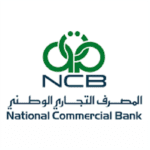
Building Adaptable Enterprise, that is
Driven
Enterprise Transformation
Core Banking Transformation

Digital Transformation (Customers)
Banking Analytics and Regulatory Compliance
Insurance
Managed, Infrastructure and Testing Services

Cloud Transformation

Integrated Data Platform for Reporting and Analytics
Composable Digital Platform for Staff, Employees, Agents
Schedule A Complimentary Consultation

Samit Kumar Bhatnagar
Chief Information Officer, TISA

Mohamed Abdel Hamid Abdel-Razek
Group Head of Technology, Transformation, and Information at Mashreq

Bakhrom Numonov
Chairman of the Board of Apex Bank, Uzbekistan
We have been elated by this partnership with Profinch, the team has been very professional and diligent in their efforts to ensure a smooth and timely go-live. With Profinch’s expertise and our commitment to excellence, we are confident in establishing Apex Bank as an innovative and credible financial institution in the country in Uzbekistan.

Molefe Petros
CIO, BancABC, Botswana
On the infra front, our performance has improved, ensuring high availability and disaster recovery.

AMHA Tadesse
VP - IT, Zemen Bank, Ethiopia
Extremely competent, forthcoming and professional. Turn around projects as per timelines and have the right blend of skills.

Bahlul Lawela
ICT Advisor at CEO Office, National Commercial Bank, Libya
We appreciate all the professional recommendations that help us to secure the system. Looking forward to working with you in other future projects as NCB management is willing to engage Profinch in future IT strategic projects.

Adisa-Adediwin Olufunsho
Head of IT Solutions and Innovations, LAPO Microfinance Bank, Nigeria
The infrastructure team of Profinch is truly a reliable partner in providing technical solutions to system configurations, database planning, creation, and migration. This was further proven by the astute and timely delivery of our core banking database migration. The team's expertise and professionalism were top-notch with best practices.

Dilshod Narzulloev
CEO, Tamvil Finance, Tajikistan
Rate them highly on service delivery, functional and technical know-how. Well informed, managed the entire project well. Process frameworks and tools ensured smooth implementation.

Lutfi Al Shukaili
Head of Customer Experience - Alizz Islamic Bank, Oman
Atumverse has helped us become more efficient. Importantly, the users have found Atumverse easy to use and has helped them have better control over processes.

Bhkhtovar Yusufi
Deputy CIO, Orienbank, Tajikistan
We decided on Profinch and haven’t looked back. Team is enthusiastic, innovative and determined to support.

Khisrow Fazli
COO, Ghazanfar Bank, Afghanistan
We wanted a partner with rich experience in implementation and delivery. We onboarded Profinch and continue to engage on multiple projects, including using their data platform, Atumverse.

Hameed Mohammed
Assistant Vice President IT, Mawarid Finance PJSC, UAE
Atumverse has changed our Business Intelligence & Reporting landscape. One of the most robust and user-friendly data platforms in the market.

Vidyasagar Bedida
VP, Technology and Processes, Jana Small Finance Bank, India
Smoothly managed the entire project. Extremely committed. Met deadlines.

Charles Crabbe
Head of Operations, GCB Bank Ltd
Liked the process-oriented approach. Well prepared during all project stages. Helped us meet timelines.

Management
Bankmed
We have been working closely with Profinch team on a new Core Banking System for reporting, reconciliation and data requirements. They have been prompt and thorough in understanding our requirements and have been consistently delivering needed work tactfully and in a timely manner.

Management
ABSA Bank, South Africa
Our relationship since 2019 has strengthened so much and we trust the company because of its great expertise. We are extremely impressed with Profinch’s deliveries to help us get stronger during our journey.

Management
CTO, COO, IT, FBN Bank, UK
We have very much enjoyed working with the team and really appreciate guidance, hard work and the approach to this first project and look forward to continuing this in our future collaborations.

Management
Al-Andalus Bank
We have been working closely with the Profinch team on implementation of FCUBS 14.3 and OBDX 19.1 on Oracle Cloud Infrastructure. The Profinch team stands out when it comes to the in-house expertise, and is spot on in terms of support. Their capabilities in understanding our requirements are commendable and their addressal ensured a seamless delivery of an imperative solution.
Read our latest whitepaper
Subscribe to our newsletter and never miss a story
|
|
Thank you for Signing Up |


